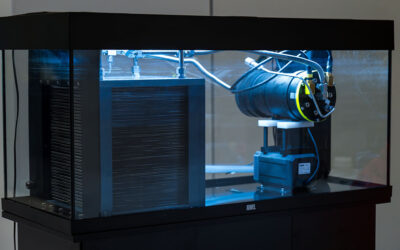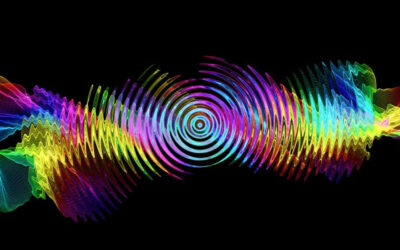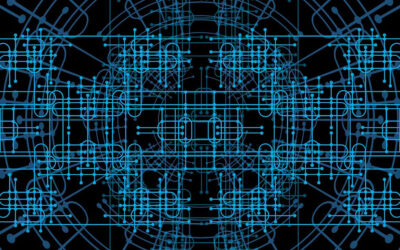Optical fibers form the backbone of modern communications, enabling high-speed internet access and data transmission across the globe. As demand for faster and more efficient data transfer grows, researchers continue to explore ways to optimize fiber-optic technology.
In a recent study, a team from the University of Iowa discovered that an alternative fiber geometry — rectangular rather than the conventional circular cross-section — can significantly enhance information transfer rates.
Their findings could improve not only telecommunications but also the emerging field of photonic quantum computing.
Understanding optical communication
Unlike traditional methods that rely on electrical signals or radio waves, optical communication transmits information using light traveling through transparent fibers.
This approach offers several advantages: optical signals experience minimal loss as they propagate through the fiber, and data transfer speeds can reach hundreds of gigabytes per second. These benefits are particularly evident in multimode fibers, where multiple light paths — known as modes — allow several signals to travel simultaneously.
“A multimode fiber is like a multi-lane highway, where light travels carrying information, much like the cars moving along different lanes,” Ravitej Uppu at the University of Iowa and principal investigator of the Quantum Light Control (QLiC!) Lab, explained in an email. “The different lanes correspond to the modes of the fiber, and the number of available modes increases with the size of the fiber core. Even with a fiber core just 100 micrometers in diameter — about the thickness of a human hair — we can have over a thousand modes, allowing us to multiplex information, meaning we can send multiple signals in parallel.”
However, the advantages of multimode fibers come with challenges.
Light traveling through different trajectories does not always arrive at the same time or at the same position at the cable’s output, leading to signal distortion. The issue becomes even more complex because optical signals consist of multiple wavelengths, each moving at slightly different speeds and following unique paths. These variations can disrupt the original signal’s coherence, resulting in an output that appears scrambled.
To mitigate these effects, strategies are needed to improve the correlations between waves of different frequencies that make up the signal.
“Frequency correlations in multimode fiber-based systems provide a quantitative way to compare how different frequencies (corresponding to different colors) of light travel through the fiber,” said Henry Hammer, a graduate research assistant at the University of Iowa. “They are particularly important for assessing how many different frequencies, which are directly connected to the smallest supported pulse length of light, can be utilized to transmit encoded information through the fiber. Using shorter pulse lengths allows more pulses to fit within a given time, thus increasing data communication rates.”
One approach to improving frequency correlations involves selecting materials with specific optical properties or combining different materials in a way that preserves signal coherence. Another strategy is to modify the fiber’s core shape, which determines the available light paths and influences how different wavelengths intermix within the medium.
Finding the optimal fiber optic cable shape
Most optical fibers have a circular core because this shape simplifies manufacturing and makes it easier to align fibers with connectors and other optical components. However, alternative geometries can provide distinct advantages.
In their study published in Advanced Photonics Research, Hammer and Uppu examined how light propagates through submillimeter-sized fibers with round and rectangular cross-sections — both supporting more than a thousand modes — to determine whether a non-conventional shape could improve frequency correlations.
They analyzed how laser pulses consisting of multiple wavelengths — primarily in the near infrared spectrum, which is used for modern day fiber optics — propagated through the different fiber geometries. The results demonstrated that rectangular fibers offered several advantages despite being more complex to manufacture.
“In a circular-core fiber, we found that frequency correlations depend on where we focus the light,” said Uppu. “When we focus light near the center of the fiber core, the frequency correlations are stronger, meaning that nearby frequencies behave similarly. However, as we move the focus toward the edge, these correlations weaken, resulting in a narrower range of correlated frequencies. In contrast, in a rectilinear-core fiber, frequency correlations remain uniform regardless of where we focus the light. This means that no matter where we inject the light, the relationship between frequencies stays the same.”
These differences have important implications for signal transmission. In fibers with a circular core, weaker frequency correlations near the edges forced the researchers to use longer pulses to maintain reliable transmission, ultimately slowing down data rates. Conversely, rectangular-core fibers provided more consistent frequency correlations across the entire core, enabling shorter pulses and faster transmission.
Their findings suggest that this design could improve optical communication channel capacity by approximately 20% compared to standard circular fibers.
“The exciting aspect of our study is that we used commercial off-the-shelf components, including standard multimode fibers,” Uppu said. “This means our methodology is readily transferrable to existing fiber-optic communication infrastructure.”
Applications in quantum photonic computing
While the team’s findings have immediate implications for improving optical communication networks, their research could also influence the development of quantum photonic computing.
Unlike conventional optical communication, which relies on large numbers of photons with a broad spectrum of wavelengths, quantum computing depends on the precise interactions of individual photons.
Optimizing fiber geometry could enhance control over these interactions, improving the efficiency of quantum information processing.
“Currently, we are expanding our research by exploring rectilinear-core multimode fibers in a quantum optical setting, moving beyond classical optics with laser beams to programmable interference between single photons,” said Hammer. “By working in the single-photon regime, we are able to investigate highly multimode quantum systems, where controlling quantum interference is crucial for quantum information processing.”
Reference: Henry C. Hammer and Ravitej Uppu, Effect of Core Geometry on Frequency Correlations and Channel Capacity of a Multimode Optical Fiber, Advanced Photonics Research (2025). DOI: 10.1002/adpr.202400156
Feature image credit: Tomislav Jakupec on Pixabay

















